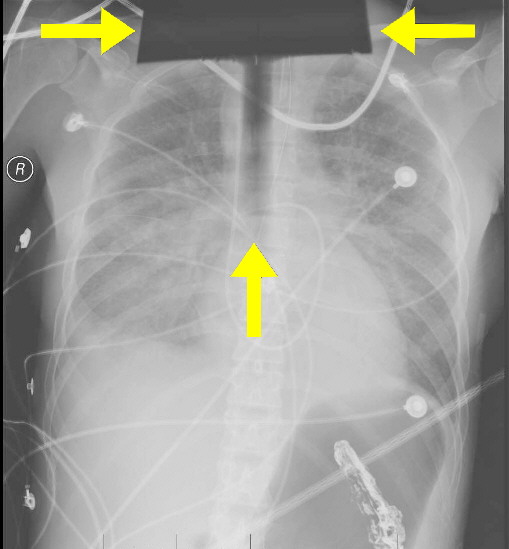 |
Unidentified Artifact
It is suspected that this cassette was accidentally exposed to radiation prior to patient exam.
|
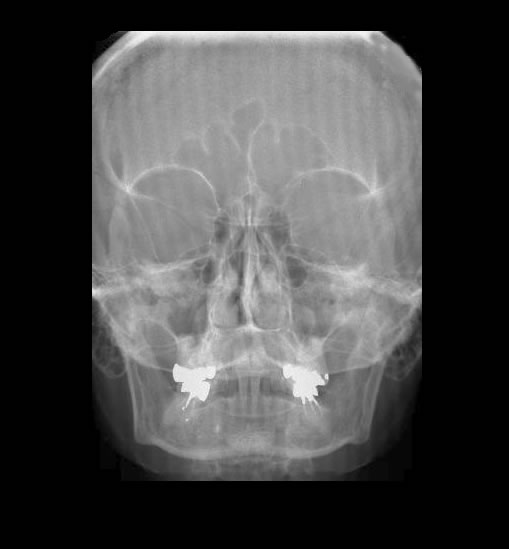 |
Grid Artifact
The lines per cm of stationary grids must not be to close to the CR sample frequency, otherwise beat or moire patterns will appear.
|
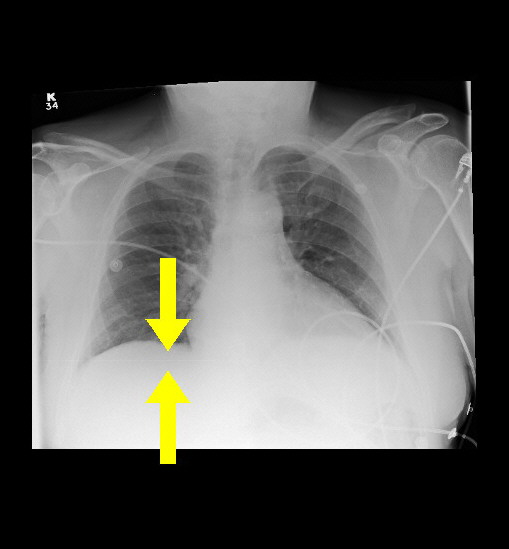 |
Line Artifact #1 This white line artifact is fairly typical of CR cassette artifacts, and may be dirt or a scratch on the cassette.
|
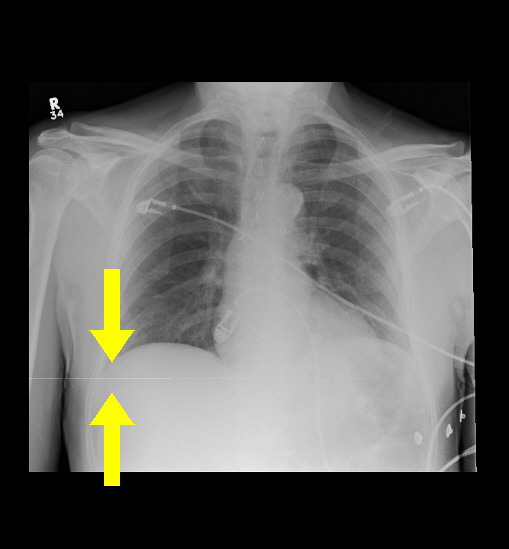 |
Line Artifact #2
This sharp, white line artifact suggests that it is a scratch on the cassette coating.
|
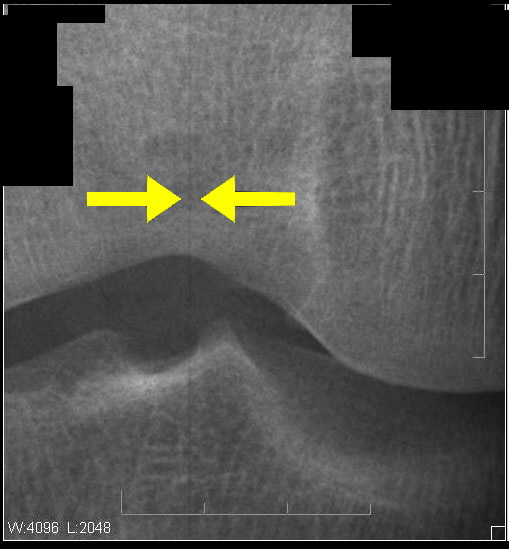 |
Line Artifact #3
Normal CR line artifacts tend to be light rather than dark. This vertical DARK line artifact could be due to dirt on the optics scattering light (eg. increasing signal to the detector).
|
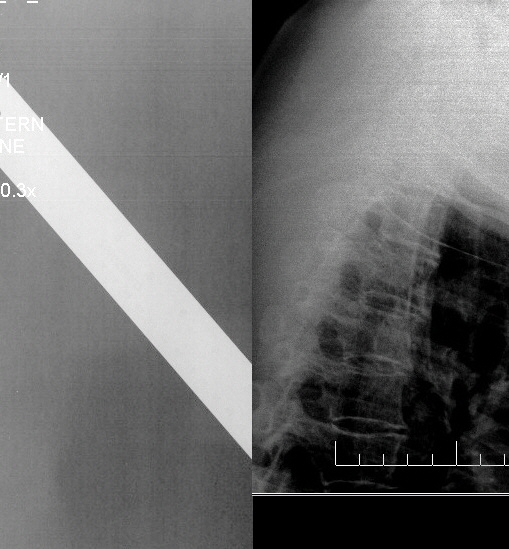 |
Line Artifact #4
This multiple line artifact appeared slowly over time. It may be a defect with the transport rail.
|
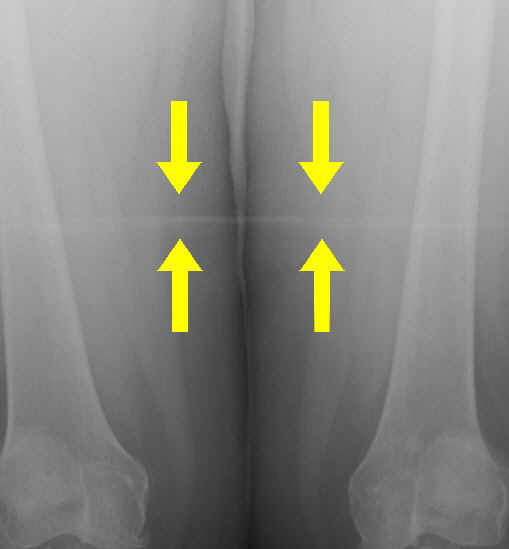 |
Stitching Artifact
Multiple cassette images stitched together create this artifact.
|
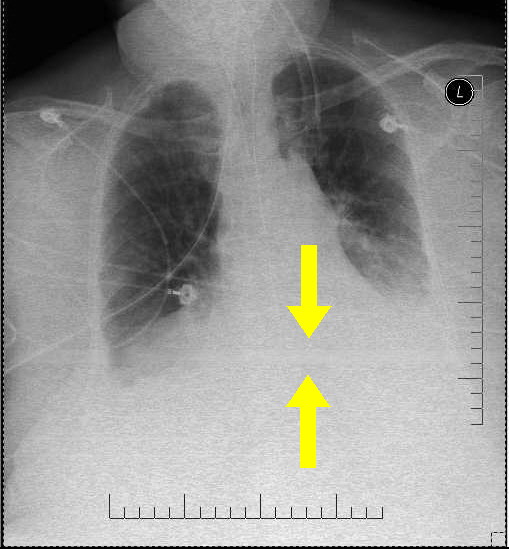 |
Light Leak
Due to either a bright light positioned directly above the CR unit or an inproperly installed or damaged light barrier, light has corrupted the image.
|
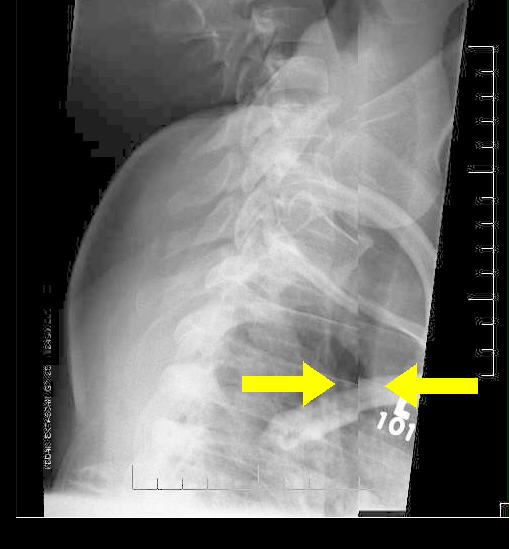 |
Vibration Artifact
This could be caused from the CR unit being vibrated during scanning or by defect with the DAS (Digital Analog Sequence) board.
|
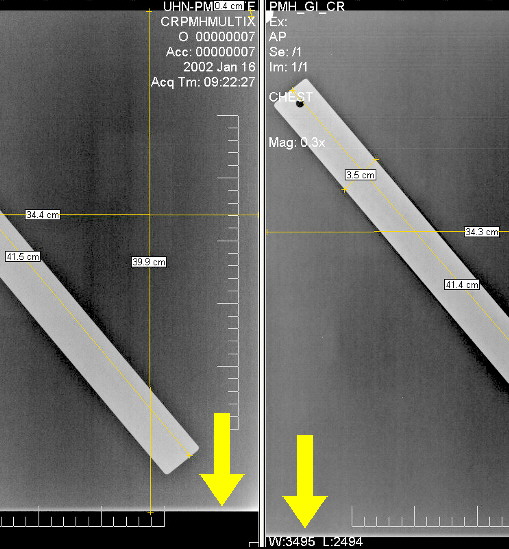 |
Underscanning
Periodically, the CR reader will underscan the "bottom" of the image, causing the loss of about 2cm of patient information. .
|
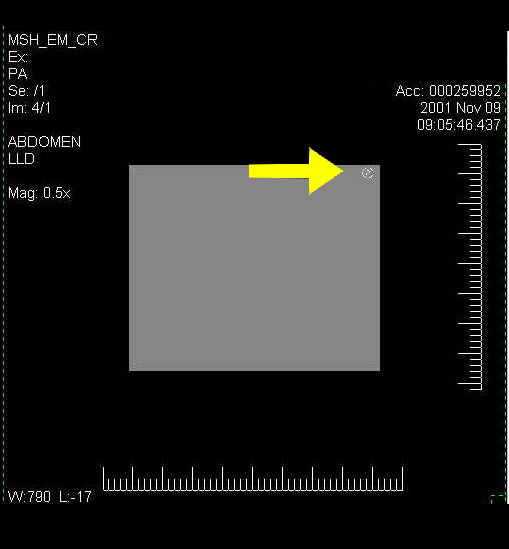 |
Processing Error
The image appeared fine on CR view panel, but had an exposure index of zero. After transfer to PACs, the patient image was missing. Note that the electronic marker image DID transfer. Without an exposure index, the PACS image display could not set a window and level value, and image data was lost. If the original image is windowed and leveled manually by the Operator, and sent to PACS again, the problem is corrected.Note:
The CR Operator only sees the viewing panel image, which is a subsample of the true image.
|